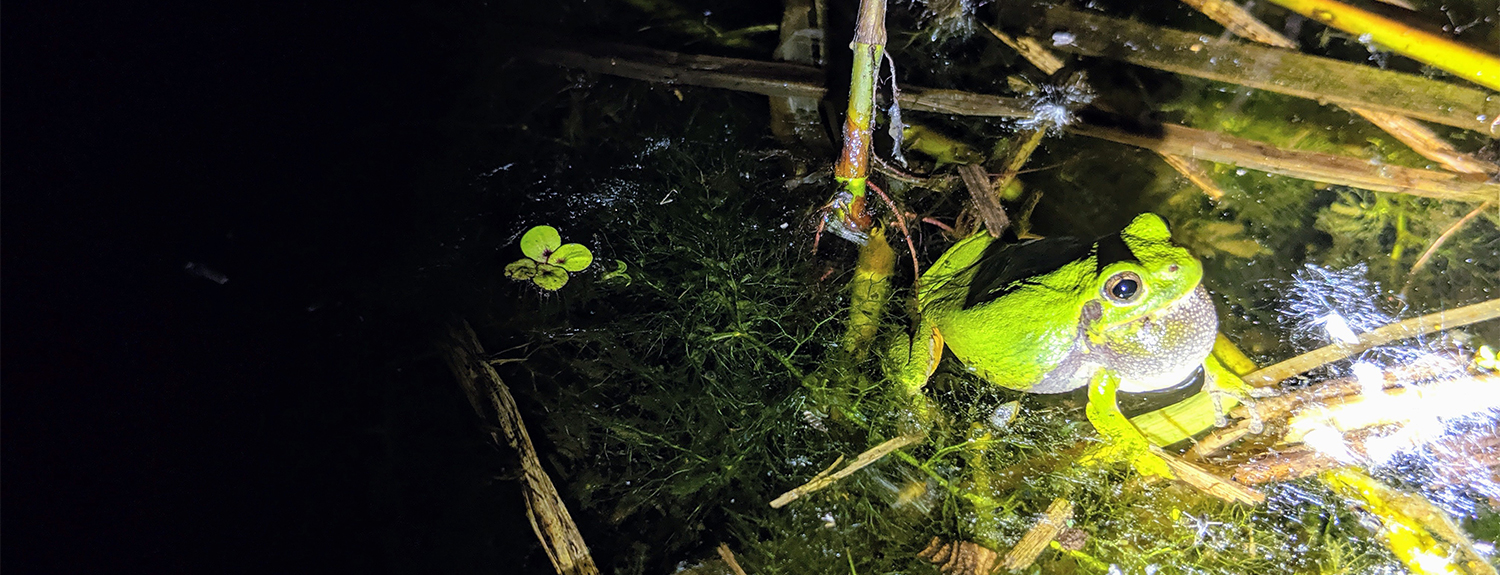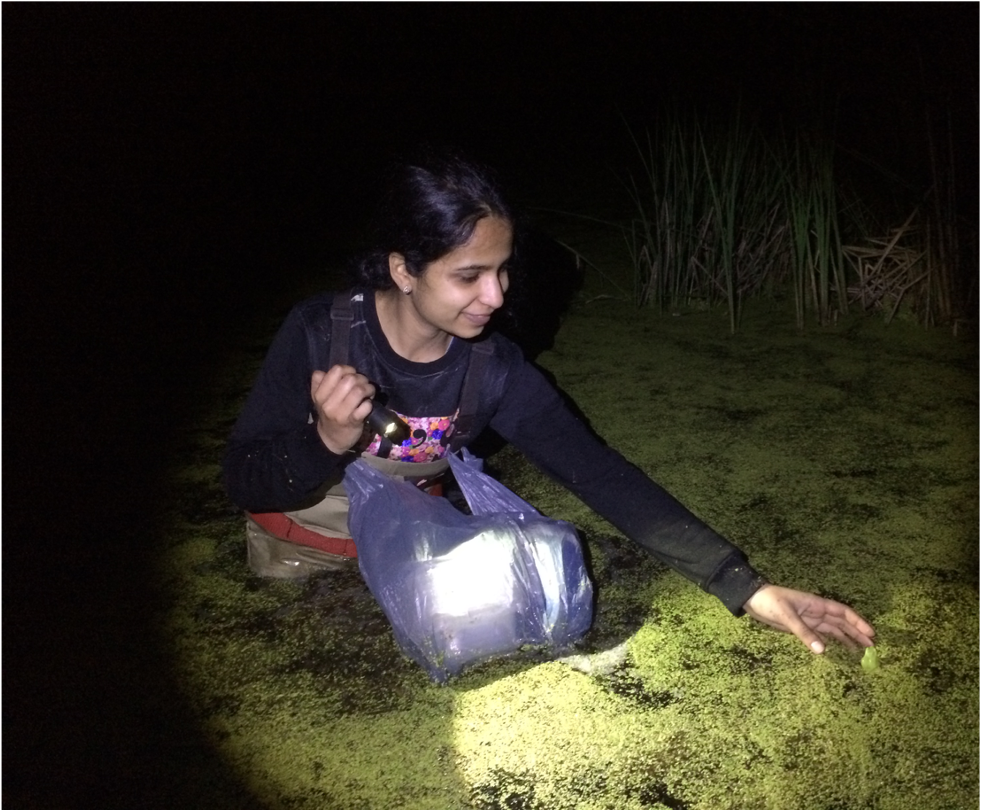
Saumya Gupta
Research Q & A
What’s your hometown?
Roorkee. It is a small town in a state called Uttarakhand, which is in Northern India.
What are you currently working on?
I am investigating how background noise affects the recognition of communication signals in animals. I am interested in this question because communication in noisy environments is not trivial. For example, take the case of a cocktail party in which we often have difficulty following conversations because of multiple talkers and loud background sounds. Animals also face challenges in recognizing the sound of interest in the presence of other simultaneous sounds. One such animal species is the gray treefrogs. They communicate in dense breeding aggregations in which hundreds of males call simultaneously. We know that female gray treefrogs often make errors in choosing a mate in such noisy environments, but we don’t know how noise interferes with the processing of communication signals. My goal is to identify how noise constrains the perception of gray treefrogs in the presence of background noise.
How did you get started/what drew you to your area of study?
During my undergraduate at the Indian Institute of Science Education and Research, Mohali, I took a course on animal behavior. That course literally changed my life! I was always fascinated by animals, but I never thought about spending the rest of my life studying animals and their behavior. After taking that course, I was convinced that this is what I wanted to do. So, I decided to do my master’s thesis in a lab that studied acoustic communication in crickets. That was the point when I started to realize the diversity of sounds that animals experience and got interested in understanding how animals perceive biologically important sounds, such as sounds of mates, prey, and predators present in their environment.
How are you working towards that goals?
I catch frogs from the wetlands from the Twin Cities and bring them back to the lab to conduct behavioral experiments. For the experiments, I exploit the tendency of female gray treefrogs to move towards their mating calls. I artificially generate different types of noise by manipulating features of sounds and broadcast each type of noise along with the gray treefrogs mating signals. Using this approach, I analyze which features of noise impair the ability of females to recognize their mating signals.
What will your next steps/research be?
I have collected preliminary data for this project. This summer, I am planning to finish the rest of the data collection. This is the last project of my dissertation, after which I will work towards writing and publishing my thesis. I expect to graduate in spring 2022 and then move on to take a postdoc position somewhere.



